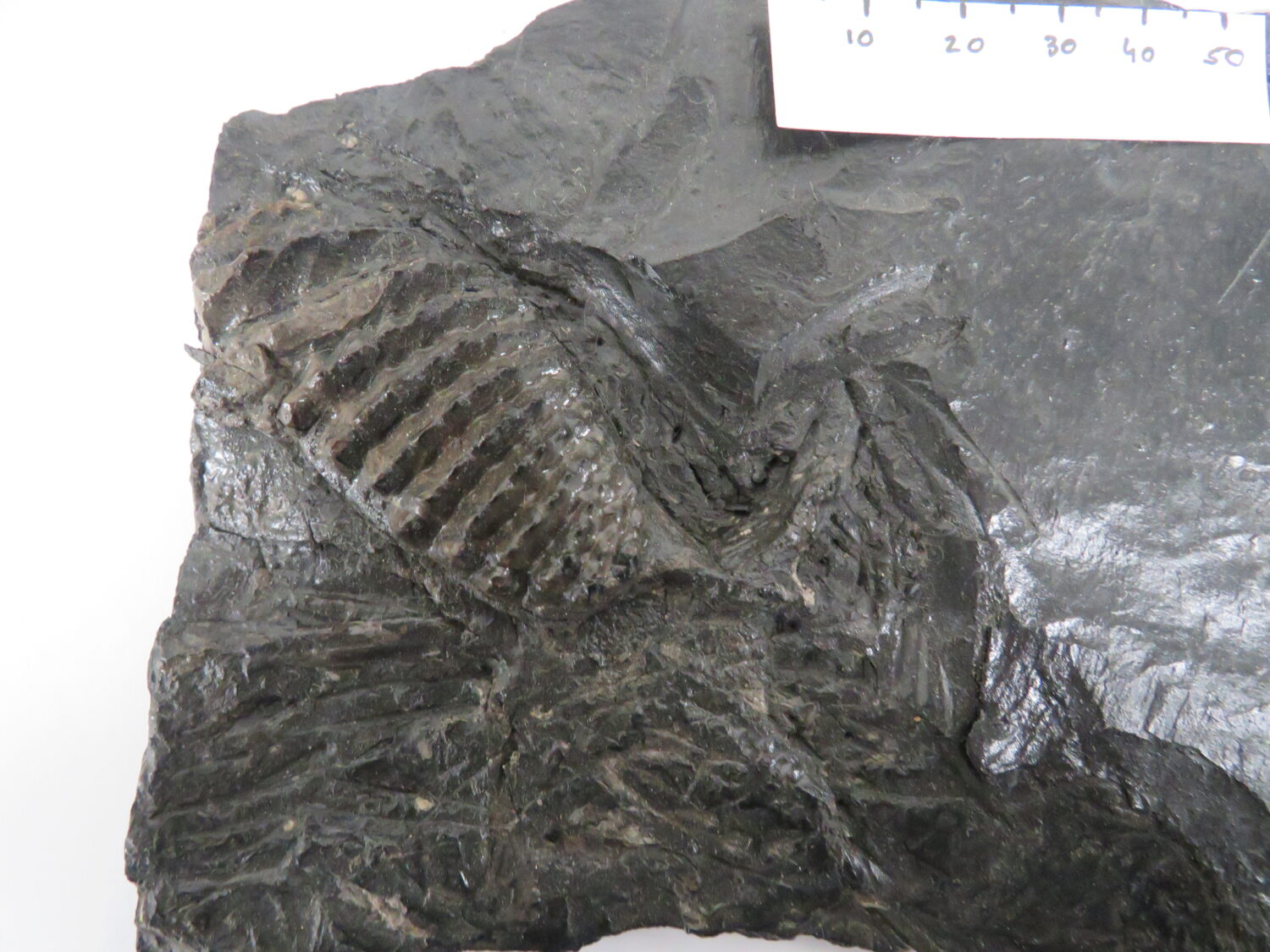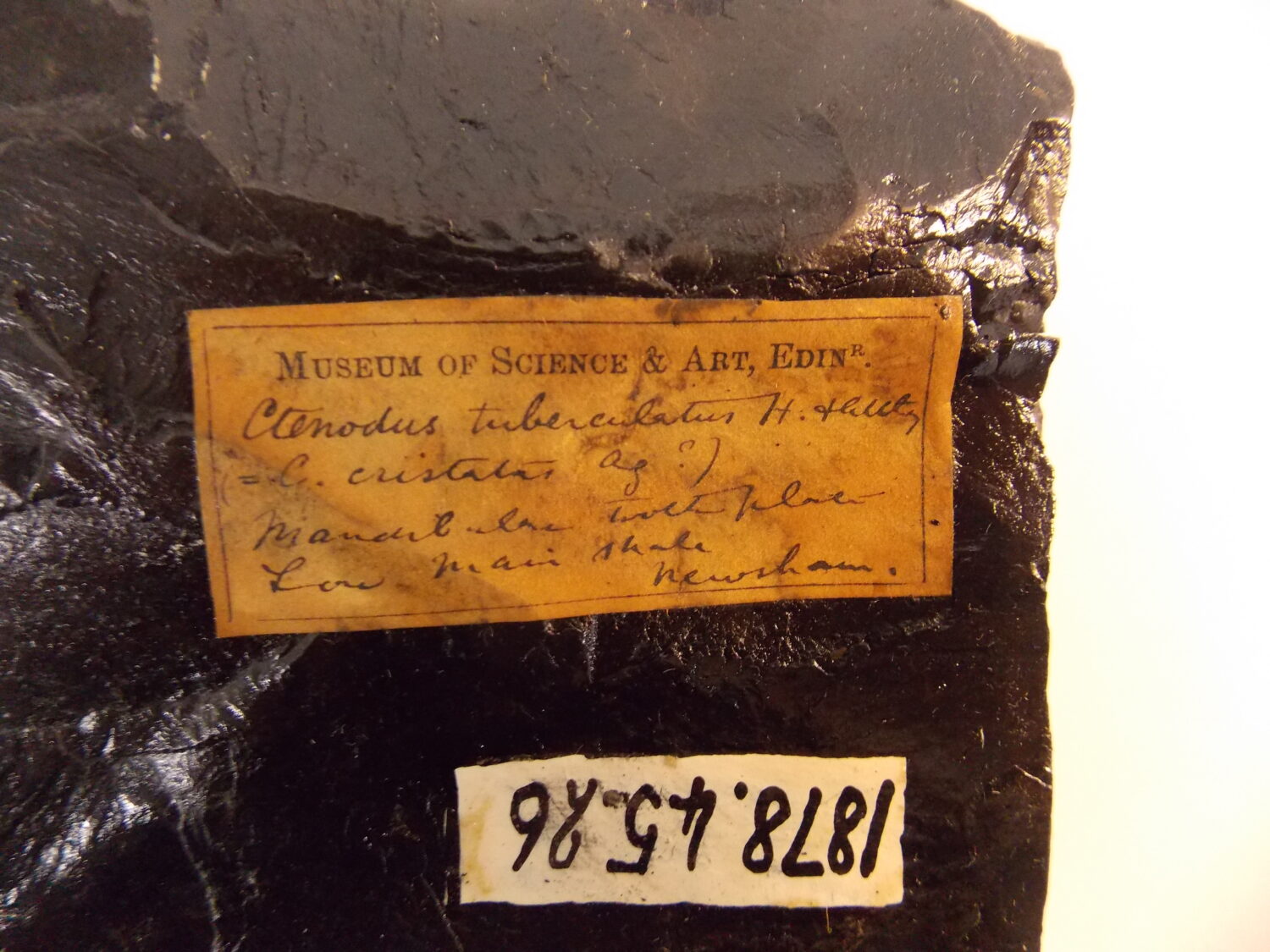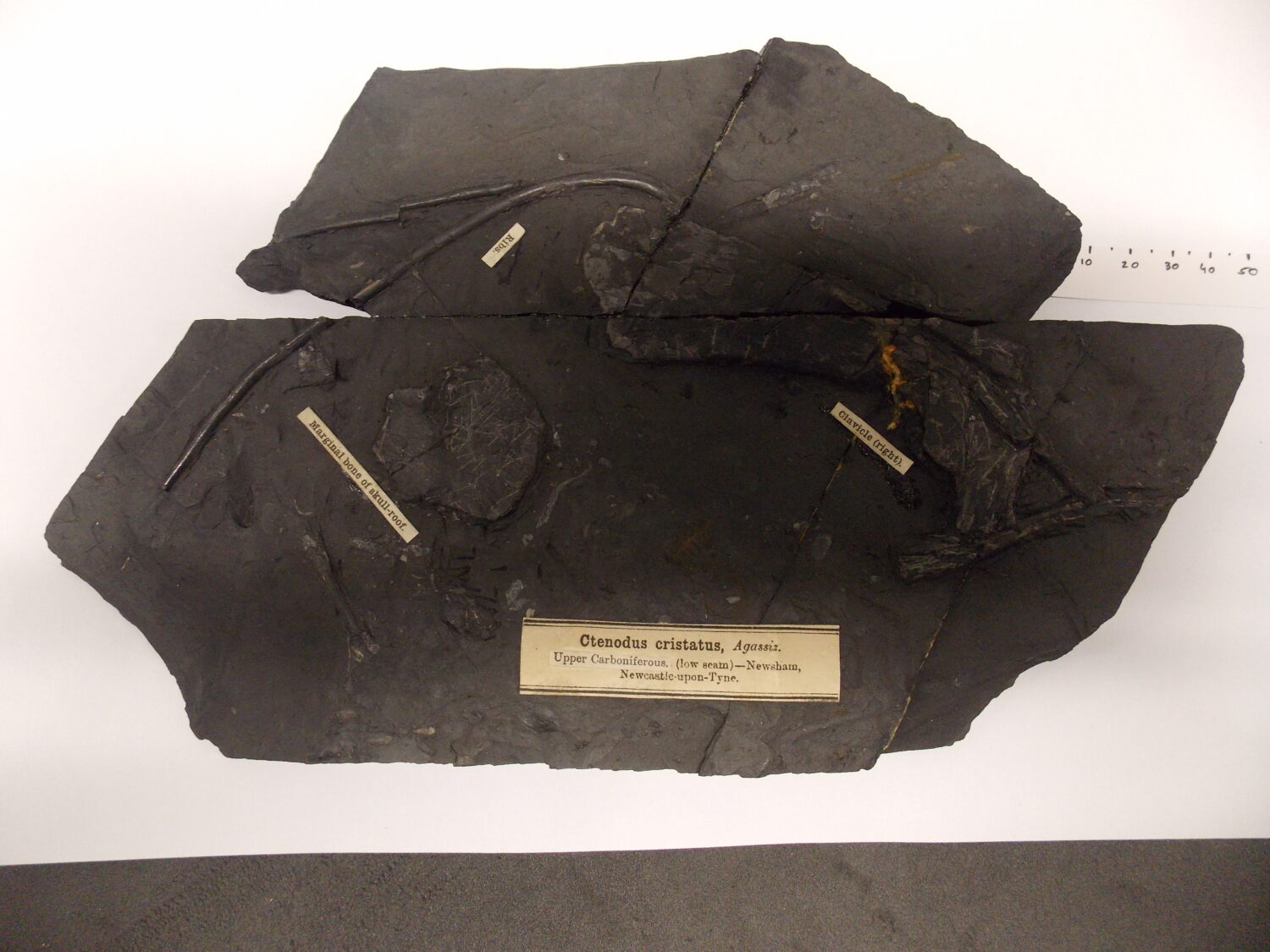In the third instalment of her series on the unsung citizen scientists of the Northumberland coalfield, Maureen Flisher chases an elusive miner and amateur paleontologist through the archives

Whilst researching this series of blogs for NHSN, I would routinely come across the name of John Salt, a miner from Newsham. Yet John Salt is something of an enigma: apart from the details recorded on the 1871 census very little is known of his life.
Born in 1839, he was originally a coal miner from Birmingham. He married his Durham-born wife Mary Dixon in 1863, and in 1870 they had a son called Thomas Salt whilst living in Wardley, County Durham. By 1871, however, John had moved with his family to live and work in Newsham. When or how John became interested in palaeontology we don’t know, but he certainly moved in the same circles as John Simm and Joseph Taylor and was part of the same microscopist group.
In T.P. Barkus’ illustrated Manual of Coal Measure Palaeontology, published in 1873, he credits John Salt for “kindly placing his large and valuable collection of fossils at my disposal”. Barkas goes on to state that the illustrations in the book were largely original and were taken from fossils “in my own cabinet” or “selected from the cabinets of Messrs. Simm, Taylor and Salt.”
By the 1870s, John was exhibiting at the same shows as John Simm and Joseph Taylor; in 1873 the Morpeth Herald records him winning top prizes for “best selection of shale fossils” and “best collection of minerals”.
John also appears in the 1875 report Labor in Europe and America, in the same section as Simm and Taylor, ‘Miners with Scientific Tastes’. “John Salt, Newsham colliery, about thirty-three years of age, has made a large collection of coal-measure fishes and labyrinthodonts, and has found the largest and best specimens of labyrinthodont that have been found in any part of the world. His collection, gathered by his own hands, was unique. He also made microscopical sections, and he, and the other miners, Simm and Taylor, first possessed very excellent microscopes. They all had good libraries. Mr. Salt has removed to Staffordshire.”
Sadly, after 1871, I can find no record of John on any census. What I did find, however is that in 1878, the Edinburgh Museum of Science and Art (now National Museums Scotland) purchased a collection of fossils from the Sunderland Museum (now the Sunderland Museum and Winter Gardens), which to this day is known as the “John Salt, Sunderland ” collection.


John’s brother-in-law Thomas Hann (a miner) and his sister-in-law Dorothy (née Dixon), lived in Sunderland, and John and his wife were frequent visitors. Given the philanthropic nature of Simm, Taylor and Salt, and Salt’s connection to Sunderland, I would suggest he sold the collection to the Sunderland Museum himself.
Salt is also mentioned in a letter from Alexander Butters, a miner who had emigrated from Cramlington to the USA in the 1850s. “If I be spared to come to England which I expect to do next Spring…..there is one [correspondent] at Newsham that I hope to make his acquaintance, that of John Salt.” Although the letter was published in the Blyth Weekly News in 1891, there is no evidence as to when it was originally written. After that the trail goes cold.
I would be delighted to hear from anyone who may have links to the Hann or Dixon family, or be able to shed any light on what happened to John once he returned to the Midlands.
The author wishes to thank:
Dr. Sarah Stewart, Assistant Curator of Palaeobiology at National Museums Scotland, and the Trustees of NMS, for information and photographs of the John Salt Sunderland Collection.
Sylvia Humphrey Assistant Keeper of Geology – for patiently answering the many queries I posed regarding the GNM – Hancock collection of Coal Measure Fossils.
Jim Fagan – for further newspaper and genealogy research.
Dr Brian Stevenson Ph.D., whose fascinating website on the history of microscopy deserves to be more widely known.
